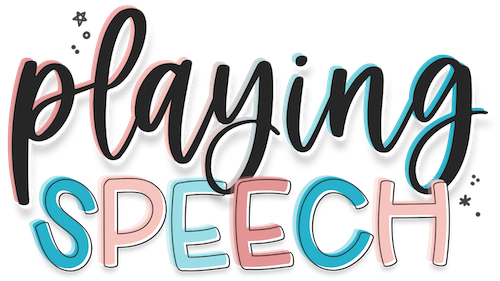The Cycles Approach, Minimal Pairs, or Complexity Approach in Speech Therapy: What’s The Difference?
Understanding Phonological Interventions in Speech Therapy
Phonological interventions are way way to target speech sound disorders in speech therapy. Phonological disorders often involve difficulties with the rules and patterns that govern how sounds are used in words, making it hard for a child to be understood by others. Speech therapists use various approaches when working with a child with a phonological disorder, targeting specific patterns of errors. Three common phonological treatment methods are the Cycles Approach, Minimal Pairs Approach, and Complexity Approach. Although all of these approaches were designed to target phonological disorders, each approaches has a unique methodology and theoretical basis for targeting speech sound errors. Let’s dive deeper into each approach.
The Cycles Approach in Speech Therapy
The Cycles Approach, developed by Barbara Hodson and colleagues, is designed for children with highly unintelligible speech. The Cycles Approach focuses on addressing multiple phonological patterns over time rather than aiming for mastery of one specific sound before moving to another. The therapy is structured in "cycles," during which a different phonological process is targeted for a short period before moving on to the next process. The idea is that children will naturally improve on these patterns over time with increased exposure, even if they haven’t fully mastered each one within a single cycle. After a cycle is completed, it is repeated as necessary, with the goal of expediently increasing overall speech intelligibility.
The Minimal Pairs Approach in Speech Therapy
The Minimal Pairs Approach is most appropriate for children with mild-moderate phonological disorders who make consistent, rule-based sound errors. Minimal Pairs targets specific phonological errors by focusing on contrasting pairs of words that differ by only one sound (e.g., "bat" vs. "pat"). This approach is based on the idea that a child’s difficulty with sounds may be due to a misunderstanding of how different sounds can change word meanings. By highlighting these semantic differences, Minimal Pairs therapy aims to help children understand the importance of correct sound use (production) and the impact it has on being understood! The goal is to correct the phonological processes (such as fronting, gliding, or stopping) that lead to sound errors, leading to more accurate and clearer speech.
The Complexity Approach in Speech Therapy
The Complexity Approach is not so much a specific approach as it is more of a target selection principle. Unlike the Cycles and Minimal Pairs approaches, it focuses on targeting complex or later-acquired sounds first. The theory behind this approach is that working on more difficult sounds will lead to improvements in the overall phonological system. When utilizing a complex target selection approach in speech therapy, you may see improvement in the specific target you are addressing…but you may also see improvement in “easier” sounds that were not directly targeted! By starting with more complex sound patterns, the child’s phonological system undergoes a more significant reorganization, leading to widespread improvement across different sounds and patterns. This approach is best suited for children with moderate to severe phonological disorders.
Comparing and Contrasting the Cycles, Minimal Pairs, and Complexity Approaches
While all three approaches aim to improve speech intelligibility in children with phonological disorders, they differ significantly in their methods and goals. The Cycles Approach focuses on multiple patterns and does not require mastery before moving on, while the Minimal Pairs Approach targets specific phonological processes through contrasting word pairs. The Complexity Approach takes a different stance by targeting the most challenging sounds first, aiming for system-wide phonological change.
Despite their differences, all three methods emphasize systematic practice and exposure to correct sound patterns. The main difference lies in how each approach structures therapy sessions and prioritizes the order in which sounds are targeted. Ultimately, the best approach depends on the child’s specific needs, the severity of their phonological disorder, and the speech therapist’s clinical judgment.
Resources for Each Approach
If you want more information or resources on each of the three approaches, here are some useful links. Click on the plus sign to open a drop down menu of additional resources for each approach!


